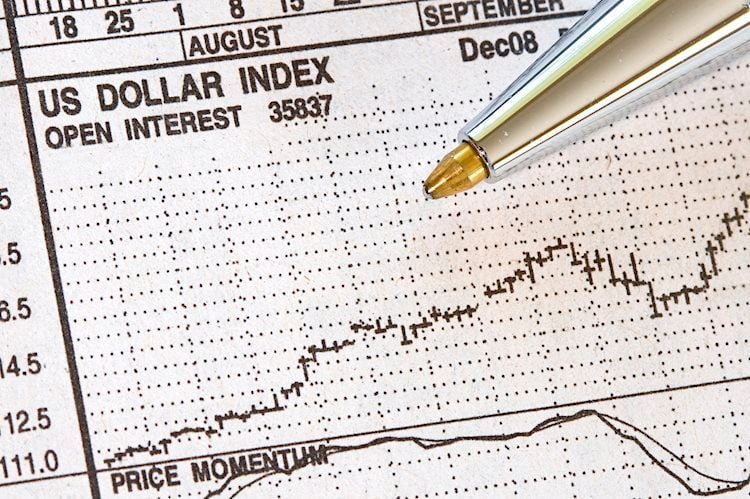- US Dollar loses momentum on decelerating CPI figures.
- Market now more certain of September cut.
- US Treasury yields fall, making traders lose interest in USD.
The US Dollar has extended its losses and the DXY index slips further on Thursday, mainly due to the decelerating inflation figures from the US Consumer Price Index (CPI), which makes an even better case for a September interest rate cut by the Federal Reserve (Fed).
Though markets are getting increasingly confident about the rate cut, Fed officials remain cautious and have indicated that they are not in a hurry to implement changes without studying data-driven indicators thoroughly.
Daily digest market movers: DXY under stress as inflation softens and markets expect a rate cut
- Keeping with his earlier stance, Fed Chair Powell reiterated that the Fed’s job is not yet done when it comes to managing inflation and even suggested the Fed has more work to do.
- He indicated that the confidence to lower rates based solely on inflation is not sufficient yet, but also pointed out that the Fed doesn’t need inflation to be under 2% before rate cuts begin.
- On the data front, the US Consumer Price Index (CPI) for June reported a decline to 3% YoY from 3.3% in May as per the US Bureau of Labor Statistics (BLS), below the market’s expectations. The core measure rose by 3.3% YoY, lower than the 3.4% expected.
- Amid continued signs of inflation softening, market participants’ confidence in a potential rate cut in September strengthens, placing downward pressure on USD.
DXY technical outlook: Negative outlook intensifies as DXY loses 100-day SMA
The DXY index losing its 10-day Simple Moving Average (SMA) has stirred up a negative outlook for the USD with both the Relative Strength Index (RSI) and the Moving Average Convergence Divergence (MACD) indicators swinging into negative trajectory.
The 100-day SMA threshold has been breached, intensifying the bearish tone. The next potential backstop for further declines could be noted at the 200-day SMA level, providing a critical bottom for the market.
Central banks FAQs
Central Banks have a key mandate which is making sure that there is price stability in a country or region. Economies are constantly facing inflation or deflation when prices for certain goods and services are fluctuating. Constant rising prices for the same goods means inflation, constant lowered prices for the same goods means deflation. It is the task of the central bank to keep the demand in line by tweaking its policy rate. For the biggest central banks like the US Federal Reserve (Fed), the European Central Bank (ECB) or the Bank of England (BoE), the mandate is to keep inflation close to 2%.
A central bank has one important tool at its disposal to get inflation higher or lower, and that is by tweaking its benchmark policy rate, commonly known as interest rate. On pre-communicated moments, the central bank will issue a statement with its policy rate and provide additional reasoning on why it is either remaining or changing (cutting or hiking) it. Local banks will adjust their savings and lending rates accordingly, which in turn will make it either harder or easier for people to earn on their savings or for companies to take out loans and make investments in their businesses. When the central bank hikes interest rates substantially, this is called monetary tightening. When it is cutting its benchmark rate, it is called monetary easing.
A central bank is often politically independent. Members of the central bank policy board are passing through a series of panels and hearings before being appointed to a policy board seat. Each member in that board often has a certain conviction on how the central bank should control inflation and the subsequent monetary policy. Members that want a very loose monetary policy, with low rates and cheap lending, to boost the economy substantially while being content to see inflation slightly above 2%, are called ‘doves’. Members that rather want to see higher rates to reward savings and want to keep a lit on inflation at all time are called ‘hawks’ and will not rest until inflation is at or just below 2%.
Normally, there is a chairman or president who leads each meeting, needs to create a consensus between the hawks or doves and has his or her final say when it would come down to a vote split to avoid a 50-50 tie on whether the current policy should be adjusted. The chairman will deliver speeches which often can be followed live, where the current monetary stance and outlook is being communicated. A central bank will try to push forward its monetary policy without triggering violent swings in rates, equities, or its currency. All members of the central bank will channel their stance toward the markets in advance of a policy meeting event. A few days before a policy meeting takes place until the new policy has been communicated, members are forbidden to talk publicly. This is called the blackout period.













